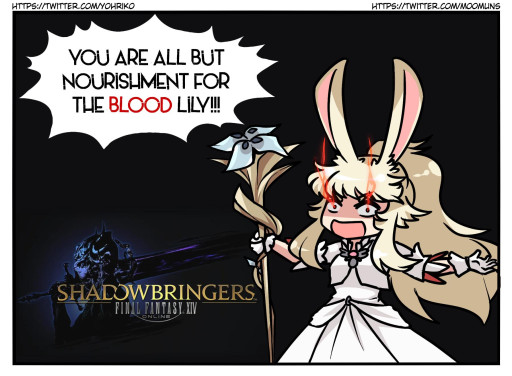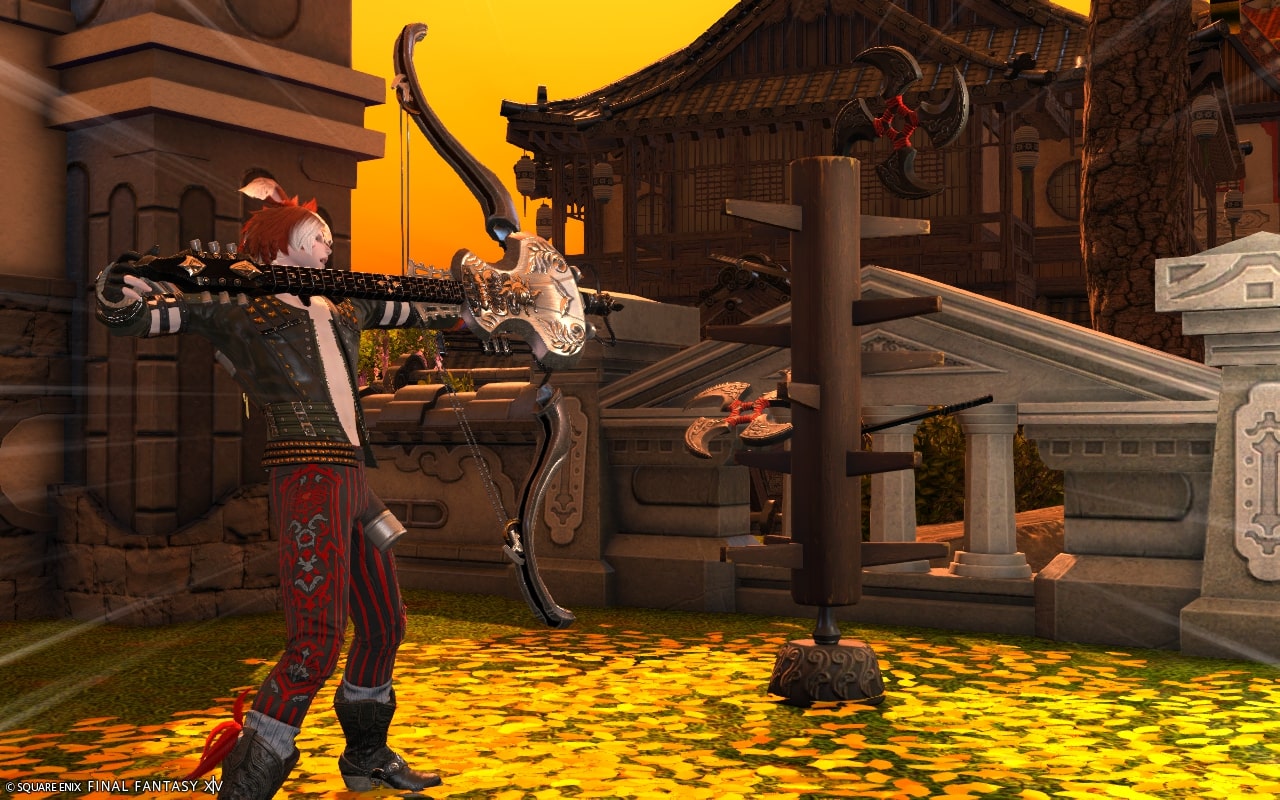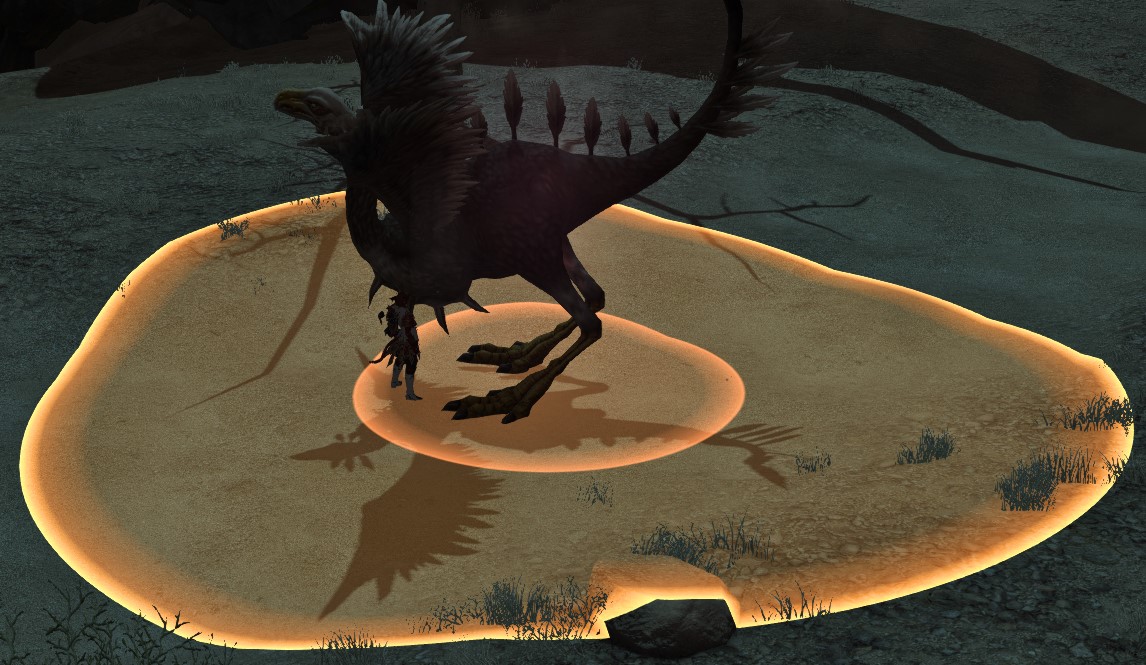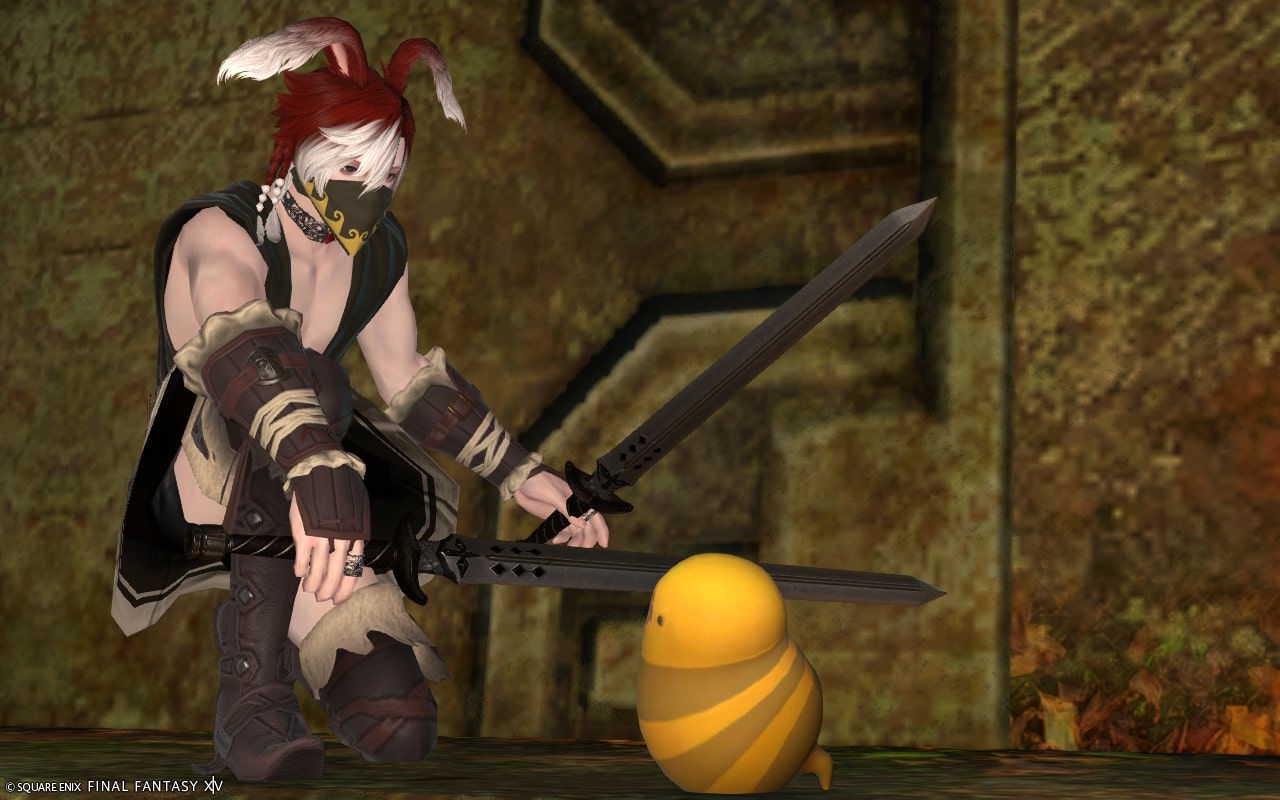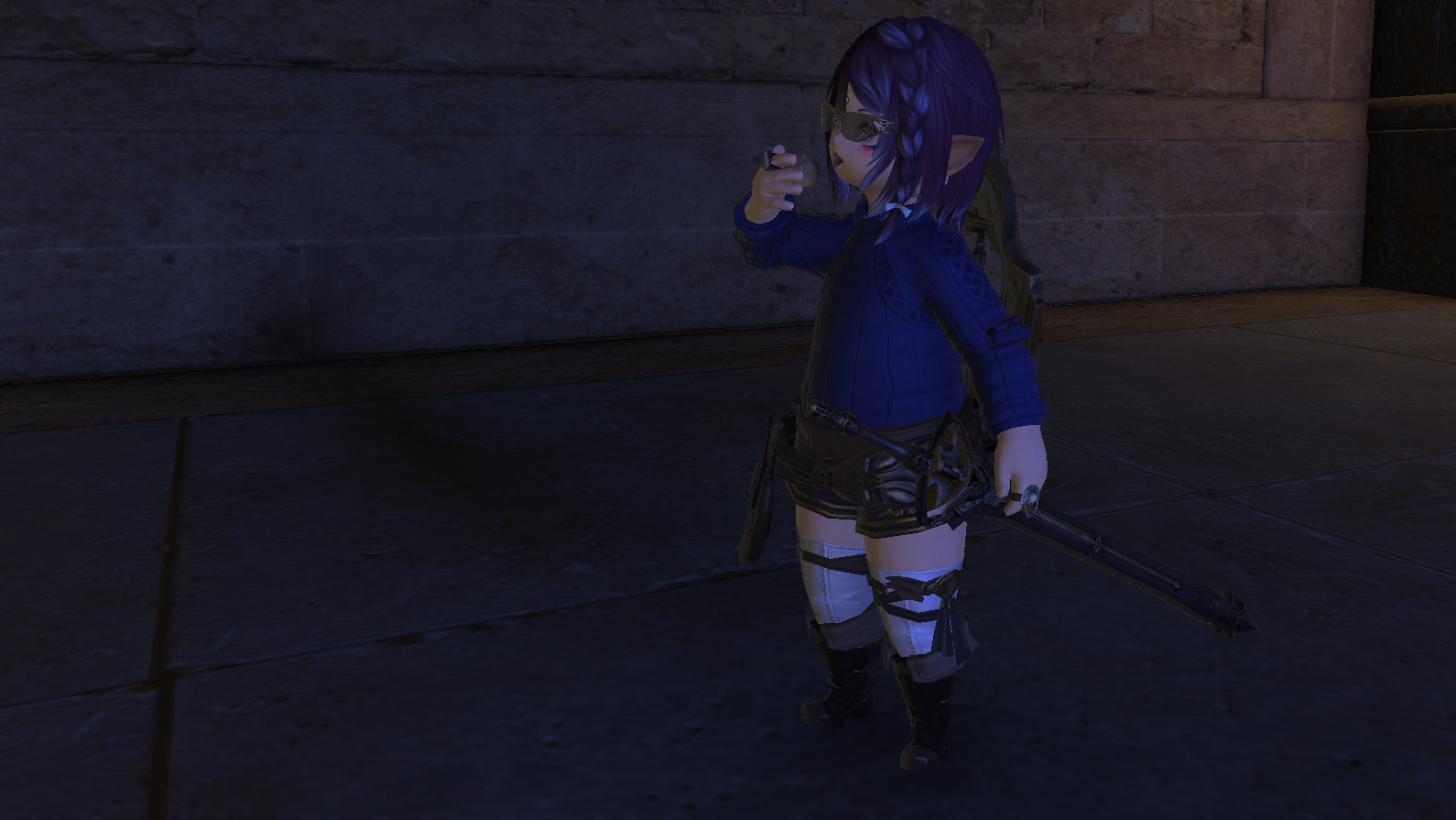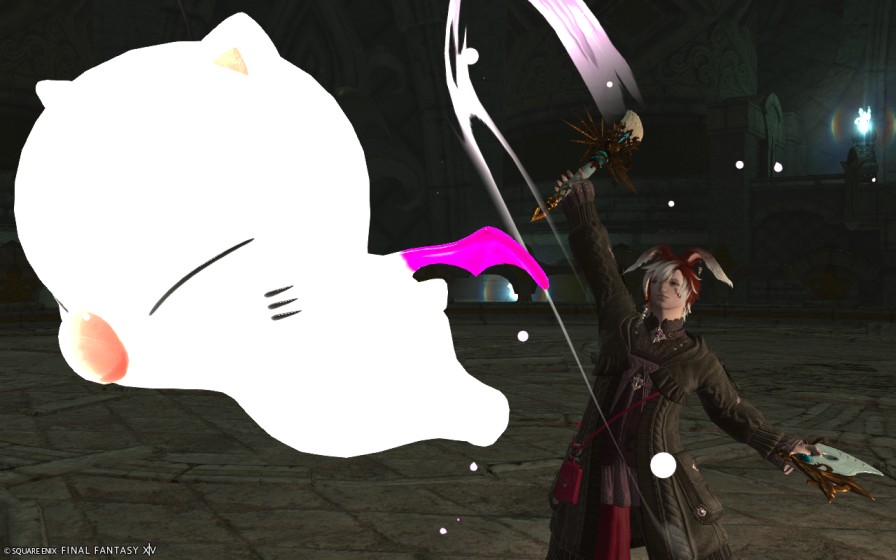
Calling what any healer does a "rotation" might be a bit of a stretch. Unlike DPS and tank classes, healers have a more elastic role in their party composition. Instead of a set rotation, healers have a toolbox of healing skills they have to choose from while also contributing to the party's overall DPS. For White Mages, that means you'll mostly be pressing your "Glare" button while throwing out heals as needed.

Before getting into the White Mage kit and how you should prioritize your skills, let's look at the design of the class. Appropriate to the Final Fantasy series and lore of Final Fantasy XIV, White Mages are the other side of the same coin as the Black Mage job. These classes benefit the most from a "turret" style gameplay, pushing out higher DPS numbers when they can minimize their movement. White Mage may even be more of a turret than Black Mage, as they have far fewer movement tools than their DPS sibling.
As I've said before, "Glare" is the skill you're going to want to get most acquainted with. At 300 potency with a 2.5 second cast time, it's the White Mage's bread and butter for DPS. And the name means you get to make a lot of puns about glaring at DPS who refuse to move out of the clearly marked AoE puddles. (Yeah, Black Mage, I'm looking at you.)
"Dia" is the White Mage's Damage over Time (DoT) spell, and main weave window. "What's a weave window?" I hear our novice White Mage's ask. To put it simply, a weave window is an instant-cast spell that gets your global cooldowns (GCDs) rolling. When you cast one of these spells you'll be unable to cast other spells that run on the global cooldown (such as Glare or Cure), but you'll still be able to cast off Global Cooldown Abilities (oGCDs).
Weave windows are important for all classes, but especially White Mage since we have so few of them. As I said before, Dia is our main weave window, and we'll want to reapply the DoT effect every 24-30 seconds (or within 6 seconds of the DoT effect falling off). When we’re weaving in oGCD skills we have a couple of options to keep in mind:
- Assize is the first ability we want to look at. This is a 400 potency AoE heal and nuke that’s centered on the White Mage. Well-versed White Mages will use this on cooldown as a DPS gain, but if you’re still getting comfortable with all your healing skills it’s okay to hold on to it for a bit. Just try not to hold on to it too long, as it has a relatively short cooldown (45 seconds) and is a huge DPS gain. Assize will usually be the first skill a White Mage casts during a Weave Window.
- Tetragrammaton (usually shortened to Tetra), a 700 potency single target heal. This is our first choice when only one person needs a heal.
- Asylum, an AoE bubble that heals over time and strengthens other heals cast. This is your main AoE heal when your party takes raid-wide damage, but won’t be taking more damage for a while. Just make sure your party is standing in the bubble.
- Presence of Mind, a long cooldown ability that turns your White Mage into a Glare spamming shotgun. You’ll want to use this as a DPS gain, so use this off cooldown when you don’t have to focus on healing.
- Divine Benison, a shield with the strength of a 500 potency heal. With a 30 second cooldown, you pretty much want to throw this on your main tank whenever you have a free weave window.
- Temperance, a temporary buff that gives your White Mage pretty glowing wings while also providing 10% damage resistance to nearby party members and increases the power of heal spells by 20%. You usually want to use this to mitigate heavy, raid-wide damage.
- Benediction, a long cooldown ability that will fully heal the party member it’s cast on. One of the best healing skills in the game, this skill will save your tanks from the brink of death and make you the blessing (or bane) of Dark Knights. Use sparingly, but do use it.

Technically, you also have instant role actions like Lucid Dreaming and Swiftcast, but the “optimal” way to use these are pretty much universally seen as use Lucid Dreaming on cooldown once you get down to 60-70% of your mana, and hold Swiftcast so you don’t have to hard cast Raise when your party member decides they don’t need to do mechanics. (At higher tiers of play you can also use Swiftcast to create an additional weave window with Glare, but don’t stress about that until you have a party you can trust to do mechanics.)
Your Lily Abilities are your next most important abilities. Every 30 seconds while in combat you’ll generate a Lily on your Lily Gauge (the White Mage job resource). These lilies can be spent to cast Afflatus Solace or Afflatus Rapture. Afflatus Solace is a single target 700 potency heal, while Afflatus Rapture is a 300 potency AoE heal centered on the White Mage. Casting either of these spells will also empower your Blood Lily, which becomes fully empowered after casting 3 lily abilities and lets you cast Afflatus Misery.

A full Lily Gauge with a fully bloomed Blood Lily.
Afflatus Misery is a targeted, 900 potency AoE damage spell that does 25% less damage to all enemies after the 1st. This is one of the most satisfying skills to use, especially when you crit or direct hit on it and see those giant numbers. If you don’t maniacally cackle “Blood for the Blood Lily!” as you cast this spell you’re not doing it right.
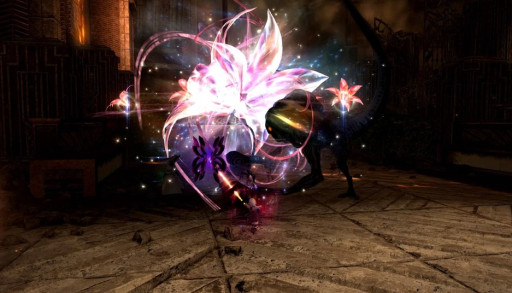
All of your Afflatus spells are instant cast GCDs, meaning casting them puts the rest of your spells on cooldown. That’s why your Afflatus heals are considered lower priority than your oGCD heals, since even with Afflatus Misery casting a spell that isn’t Glare is a DPS loss. (3 Lily heals and 1 Afflatus Misery is 900 potency, versus the 1200 potency you get from casting 4 Glares.)
However, that doesn’t mean you won’t have ample opportunities to use your Afflatus skills in high-end content. Afflatus Rapture is your best source of instant AoE healing, and when you’re in a movement-heavy situation using a Lily heal even if your party doesn’t need any healing is preferable to not casting anything. Consider it an investment in damage later on, when you can cast Afflatus Misery to make up for all the Glares you couldn’t cast while moving.
Because your Afflatus skills are GCDs they can also be used to create weave windows. Following an Afflatus Rapture cast with an Assize can be a solid source of burst healing after a heavy raid-wide, while holding on to an Afflatus Misery until you need to weave in a Tetra on your tank is an effective strategy. The real hard and fast rule you want to adhere to with the Lily Gauge is not using a lily heal while you have a full Blood Lily.
Finally, rounding out our kit, we have our hard cast heals and Regen. It might surprise some of you if I told you we, ideally, never want to cast these spells. While they were our bread and butter while we were leveling, by the time you reach max level you have so many oGCD heals that we can typically make do without GCD heals in all but the most niche situations. During well-managed raids you might use Medica II once or twice for the AoE regen effect, but if you’ve gotten to the point where you’re casting Cure II or Medica to keep your party alive the run has probably already taken a turn for the worst.
At the end of the day, these suggestions are meant to get you to heal more efficiently and get a good parse on FFlogs, but the most important part of high end raiding in Final Fantasy XIV is learning the mechanics of the fight. A simple rule of thumb for all classes is to follow your ABCs: “Always Be Casting,” meaning you always want your global cooldown running. Now good luck, raiders! Don’t forget about me when you’re the world’s best White Mage!
